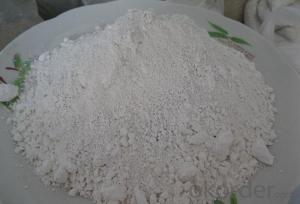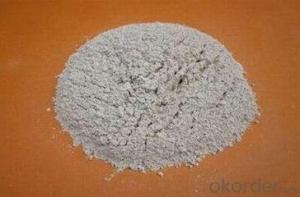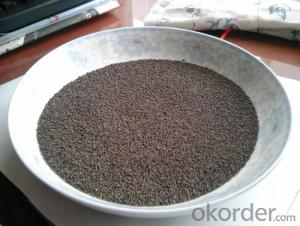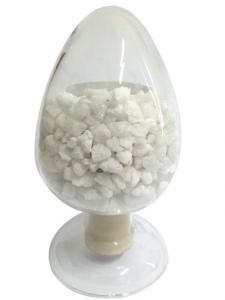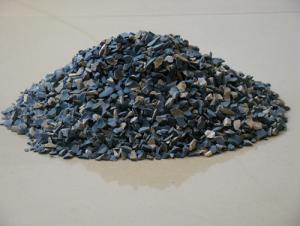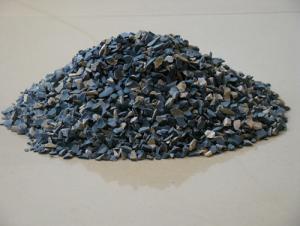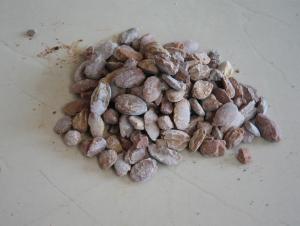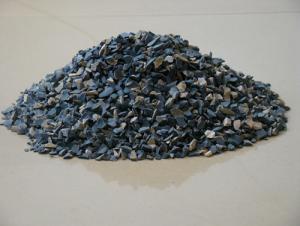83% Rotary/ Shaft/ Round Kiln Alumina Calcined Bauxite Raw Material for Refractory
- Loading Port:
- Tianjin
- Payment Terms:
- TT OR LC
- Min Order Qty:
- 25 m.t.
- Supply Capability:
- 3000 m.t./month
OKorder Service Pledge
OKorder Financial Service
You Might Also Like
83% Rotary/ Shaft/ Round Kiln Alumina Calcined Bauxite Raw Material for Refractory
Specifications
| Al2O3 | SiO2 | Fe2O3 | CaO+MgO | K2O+NaO | Density | TiO2 |
| 80% | 6-14% min | 2%-3% max | 0.4% max | 0.05-1% max | 2.9-3.2 | 3.5% max |
| 85% | 6-14% min | 2% max | 0.4% max | 0.05-1% max | 2.9-3.2 | 3.5% max |
| 87% | 6-14% min | 2% max | 0.4% max | 0.05-1% max | 2.9-3.2 | 3.5% max |
| 88% | 6-14% min | 2% max | 0.4% max | 0.05-1% max | 2.9-3.2 | 3.5% max |
It can be used in aluminium industry ,precision casting, refractory materials and refractory cement.Sized Sand: 0~1mm
1~3mm
3~5 mm
5~8mm
8~12mm
100mesh
180mesh
240mesh
320mesh
Characteristics:
1. Chemical stability,
2. Good physical properties.
3. High volume density.
4. High refractoriness.
5. High temperature calcination.
6. Low content of impurities.
Physical and chemical index:
Grade/Item | Chemical composition % | Bulk density g/cm³(min) | Water absorption% | ||||
AL2O3 | Fe2O3 | Ti02 | CaO+MgO | K20+Na20 | |||
GAL-88 | >=88 | <=1.5 | <=4.0 | <=0.4 | <=0.4 | >=3.15 | <=4 |
GAL-85 | >=85 | <=1.8 | <=4.0 | <=0.4 | <=0.4 | >=3.10 | <=4 |
GAL-80 | >=80 | <=2.0 | <=4.0 | <=0.5 | <=0.5 | >=2.90 | <=5 |
GAL-70 | >70--80 | <=2.0 | - | <=0.6 | <=0.6 | >=2.75 | <=5 |
GAL-60 | >60--70 | <=2.0 | - | <=0.6 | <=0.6 | >=2.65 | <=6 |
GAL-50 | >50--60 | <=2.5 | - | <=0.6 | <=0.6 | >=2.45 | <=6 |
| 1.Refractory Grade: |
Refractory grade bauxite has high refractoriness, good mechanical strength and moderate slag resistance. Bauxite in the refractory industry is typically used in ladle working lining, tundish furniture, delta sections, general perpose repairment, aluminium melting furnace and mineral processing.
| 3. Rotary calcined bauxite: |
Rotary Kiln Bauxite, as the name suggests, it is the bauxite produced by rotary kiln. there are three kinds of kilns for bauxite production mainly, rotary kiln, shaft kiln and round kiln.
| 4. Shaft kiln calcined bauxite: |
Shaft kiln bauxite, the bauxite calcined by shaft kiln. the raw material-bauxite ore is loaded from the top of kiln together with coal powder and combustion improver,the fire of calcination comes from kiln bottom, about 1300-1400 ℃After the complete calcination, the bauxite is carried out from the bottom.
Application:
1.Aluminium metallurgy.
2.Precision casting/Investment casting: bauxite grog fines can be made into mold for precision casting.
3.Refractory: high alumina bauxite's refractoriness can reach 1780°C.
It is charactered by good chemical stability and mechanical performance.(Al2O3 ≥48% with low Fe2O3)
4.Aluminium silicate refractory fiber: The high alumina bauxite grog can melt under2000°C-2200°C in the electric arc furnace. After a series of processing, it can become aluminium silicate refractory fiber, which can be made into fiber blanket,plate,cloth.
5.Mixing magnesia and bauxite grog with binders to pour the molten steel ladle for better overall lining performance.
6.Producing bauxite cement.
7.Abrasives.
8.Ceramics industry.
9.Chemistry industry for all kinds of aluminium compound.
Calcined Bauxite Grade:
Shaft Kiln Bauxite
Rotarty Kiln Bauxite
Round Kiln Bauxite
Packaging & Delivery
Packaging Details: In bulk or in 1-1.25mr bag
Product Pictures:
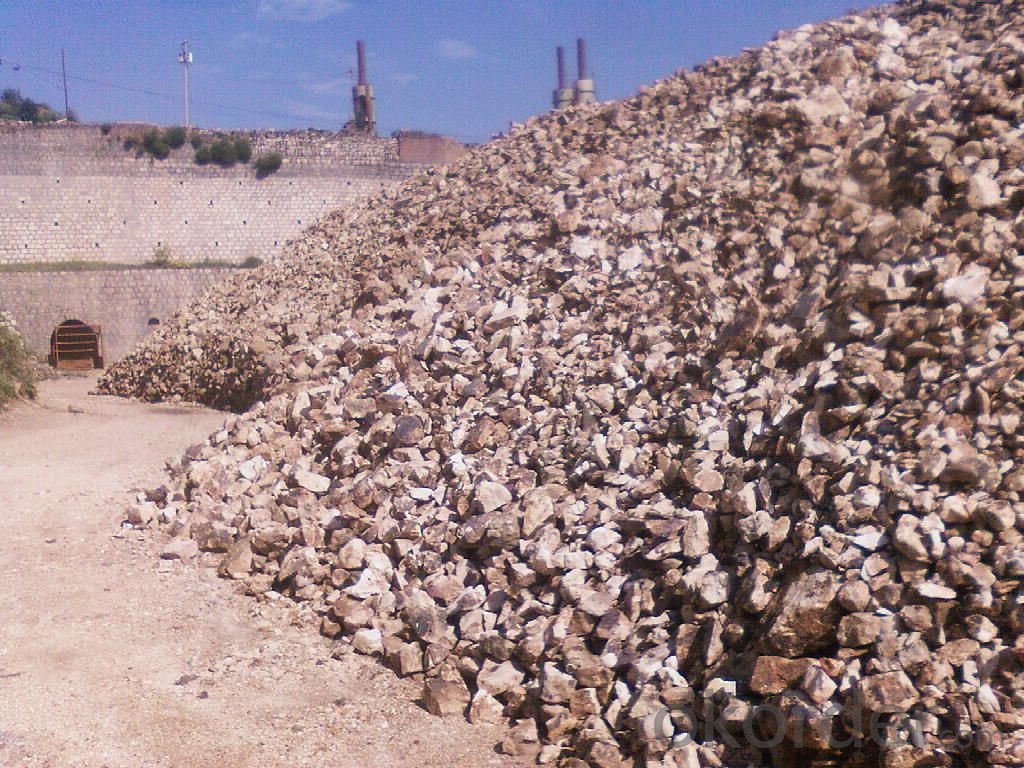
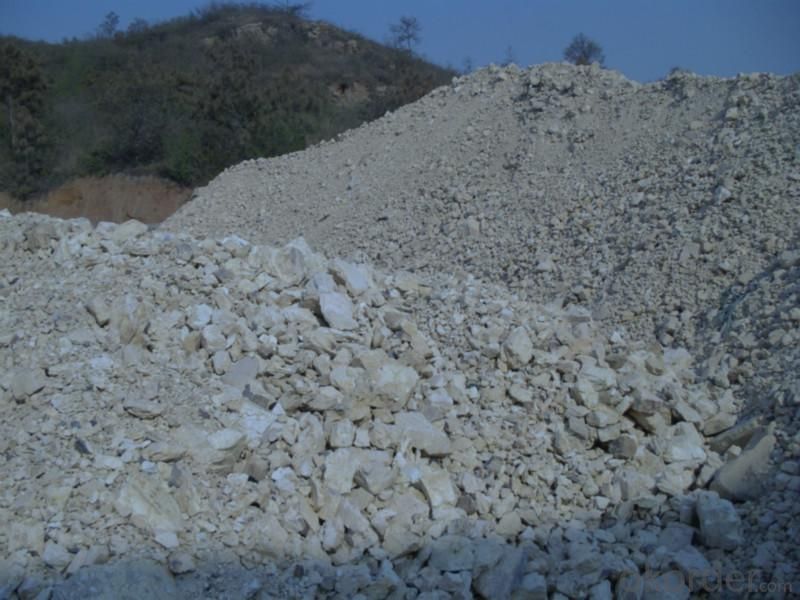
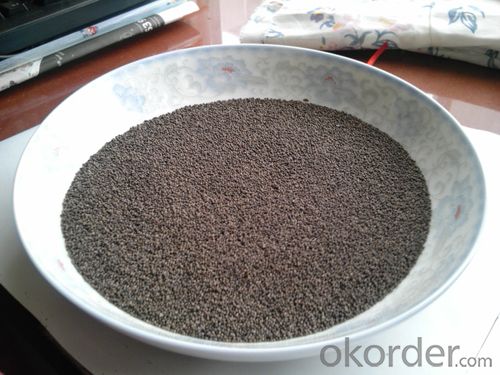

Our Service:
1. Your inquiry related to our products or prices will be replied in 24hours.
2. Manufacturer with large capacity, ensure the fast production cycle after confirmed the order.
3. Our professional technicians will answer your entire enquiry in patient.
4. To meet the refractory solutions, we can serve as your instructions.
5. Protection of sales area and private information for our entire customer.
If you’ve kind enquiries, please don’t hesitate to let us know. ^_^
- Q:What are fire?ratings of wall thermal insulation material?
- Grade A material has no ignition and is material with thermal insulation effect, anti-combustion material. Currently it mainly refers to inorganic thermal insulation mortars of vitrified micro bead, hole-closed?expanded perlite, rock wool,mineral wool,glass wool,cement base or gypsum base, inorganic thermal insulation mortars and self thermal insulation system of lightweight block. Grade B1 is nonflammable thermal insulation material, which is determined by fire endurance of this material. In addition, the division of the material of different parts is different! What is commonly seen, such as EPS / XPS insulation boards adding flame retardant through special treatment. Grade B2 is combustible thermal insulation materials, and what is commonly seen is EPS expanding polystyrene board and XPS extruded polystyrene board, that is, the general board. This material has low ignition point, and releases large amounts of harmful gases in the combustion process . Grade B3 is flammable insulation material. Thermal insulation material with polyphenyl foam as main material is commonly seen. Since this material is highly flammable, it has been eliminated external wall thermal insulation materials.
- Q:Can anyone tell me what is A-leve fireproof material?
- Combustion performance of materials can be divided into: A-level, B1-level, B2-level and B3-level, which respectively refer to noncombustible, difficult-flammble, flammable and inflammable materials. Building materials can be divided into four grades based on combustion performance (noninflammability, flame retardancy, flammability and inflammability). According to the stipulation of "Specification of Fireproof Design for Buildings" (GBJ16-1987) (2001 revised edition), fire hazard of production or storage should be divided into A-level, B-level, C-level, D-level and E-level. In "Specifications on Fireproof Design for Petrochemical Enterprises" (GB50160--1992) (1999 Revision), it also stipulates that fire hazard should be classified on the same basis of subtsance danger in usage, production or storage. According to different fire hazard, requirements and measures of oreventing and restricting fire explosion can be put forward from the aspects of fire?separation distance, fire resistant rating of buildings, allowed floors, safe evacuation, fire fighting facilities and other aspects.
- Q:Which fireproofing materials factory is the best in Xiangyang?
- Of course, it is "Lvchuang Construction Energy Saving Engineering Co., Ltd." in Xuzhou, which main products are A-level fireproofing thermal insulation boards. It has many projects. B1-level fireproof materials are polyphenyl boards, extruded sheets, phenolic foam boards, Polyurethane board, sea capacity building energy efficiency module. Flame retardant has been added to the sea capacity building energy efficiency modules which has a B1-level fireproofing performance. You can also add expanded glazed hollow beads to them if you are worried about the security.
- Q:Who can tell me what is neutral refractory?
- Neutral refractories refer to the refractory materials which will not react greatly with both acidic and basic slag at high tempreratures. Such as carbon refractories and chromite refractories. The main components include carbon, silicon carbide, aluminum oxide, chromium oxide and other trivalent oxides, such as carbon refractories and chrome refractories, etc. Strictly speaking, neutral refractories refer only to the carbonaceous refractories, including carbon brick and graphite silicon carbide products, etc.
- Q:What are the characteristics of clay refractory materials?
- Refractory clay refers to the refractory clay and bauxite, whose refractoriness is over 1580℃, which can be used as refractory materials. Apart from high refractoriness, they can maintain stability of volume under high temperature conditions and has resistance to slag, the sudden cold and hot, and mechanical strength, so after calcination, it can be abnormal firm.
- Q:Please answer the questions about the packing and transportation requirements of refractory materials.. Requirements for packing of refractory bricks
- Bricks are usually made from pallets.Generally take the automotive, coastal sea city.
- Q:How to hang the suspended brick in the refractory masonry?
- First you can weld the metal fastener of the suspended brick and then hang up the brick.
- Q:How long is the fire endurance of fire resistant rolling shutter door?
- According to fire endurance, fire doors can be divided into Class A, Class B and Class C fire doors, whose fire resistance should be no less than 1.20h, 0.90h and 0.60h respectively. You can use fire resisting shutters to seperate fire?compartments in places where it is difficult to set firewalls. When using the fire resisting shutter with unexposed surface temperature rise as fire endurance conditions, its fire endurance should be no less than 3h. But when using the fire resisting shutter without unexposed surface temperature rise as fire endurance conditions, you should set independent protection of closed automatic water spray system at two sides of the shutter, and the duration of water spraying should be no less than 3.0h. I hope it's useful.
- Q:Who knows about ranking rules of fireproofing thermal insulation materials for exterior wall?
- You can try the following way to give a brief introduction of the fire?rating classification of external wall thermal insulation materials. 1. the building materials are divided into following categories in terms of combustion performance according to the national standard of GB8624-97. A-level: Incombustible building material: materials almost don't burn. B1-level: nonflammable building material: these materials are good at resisting flame. It is difficult for them to burst into fire when coming across open fire in the air or at high temperature. It will not quickly get wilder and when the fire source removes, it will be extinguished immediately. B2-level: Combustible building material: combustible building materials can play a certain role in flame resistance. It will immediately burst into flames when coming across open fire or at high temperature, and will lead to fire spreading, such as wooden column, timber roof truss and timber beam as well as stairs. B3-level: Inflammable building material: Inflammable building materials are highly flammable with no flame retardant ability. The fire risk is high. 2.The exterior wall thermal insulation materials can be classified according to fire rating. 1). Insulation materials with A-level combustion performance: rock wool, glass wool, foam glass, foamed ceramics, foam cement, hole-closed perlite, etc. 2). The insulation materials with B1-level combustion performance: specially-treated extruded polystyrene board(XPS)/ specially-treated polyurethane(PU), phenolic aldehydegelatine powder polyphenyl granule,etc. 3). Insulation materials with B2-level combustion performance: molding polystyrene board(EPS), extruded polystyrene board(XPS), polyurethane(PU), polyethylene(PE), etc.
- Q:Is there any difference between insulating bricks and refractory bricks? Are there any professional refractories factories that are reliable in the quality and quality of these irritated materials?
- Seven characteristics of insulating brick:Insulation and heat insulation: effectively reduce energy consumption.Fire prevention: up to national standard or class A.Clean and environmental protection: no two pollution will be caused by air.Per square metre weighs only about 1.4 kilograms, reduce the burden of building.Simple production: completely break through the traditional process, greatly shorten the construction cycle.Beautiful: can be modulated into a variety of colors, suitable for Ming outfit.Durable: long service life.
1. Manufacturer Overview |
|
|---|---|
| Location | |
| Year Established | |
| Annual Output Value | |
| Main Markets | |
| Company Certifications | |
2. Manufacturer Certificates |
|
|---|---|
| a) Certification Name | |
| Range | |
| Reference | |
| Validity Period | |
3. Manufacturer Capability |
|
|---|---|
| a)Trade Capacity | |
| Nearest Port | |
| Export Percentage | |
| No.of Employees in Trade Department | |
| Language Spoken: | |
| b)Factory Information | |
| Factory Size: | |
| No. of Production Lines | |
| Contract Manufacturing | |
| Product Price Range | |
Send your message to us
83% Rotary/ Shaft/ Round Kiln Alumina Calcined Bauxite Raw Material for Refractory
- Loading Port:
- Tianjin
- Payment Terms:
- TT OR LC
- Min Order Qty:
- 25 m.t.
- Supply Capability:
- 3000 m.t./month
OKorder Service Pledge
OKorder Financial Service
Similar products
New products
Hot products
Related keywords
